SVMs¶
Note
On the homework:
How do we estimate \(\mu\) and \(\sigma\) from the data?
- \(\arg \max_{\mu, \sigma} P(GPA1, GPA2..GPA6|\mu, \sigma)\)
- \(\hat{\mu}_N = avg(GPA)\)
Support Vector Machines
Max-Margin Classification¶
This is a linearly separable dataset, and all these hyperplanes are valid, but which one is best?
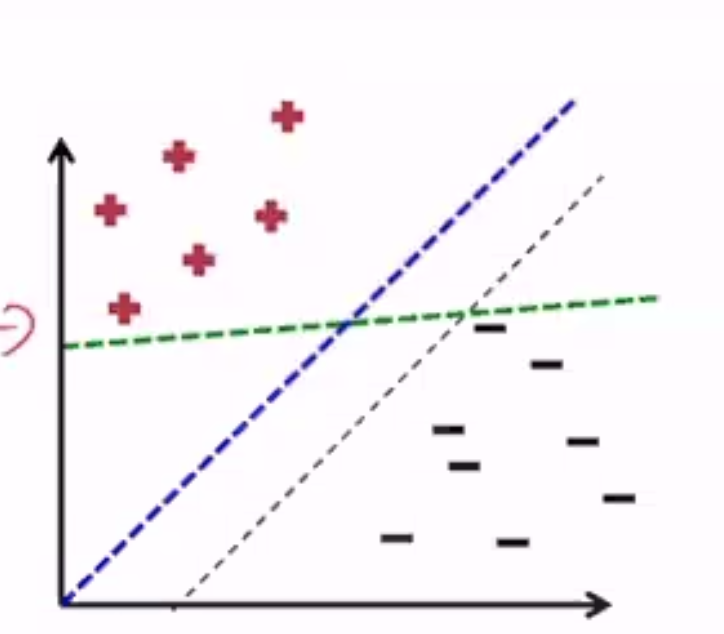
- The blue one has the largest margin
- Margin: Distance between the hyperplane and the nearest point
- defined for a given dataset \(\mathbf{D}\) and hyperplane \((\mathbf{w}, b)\)
SVM is a classification algorithm that tries to find the maximum margin separating hyperplane.
Hard SVM¶
Setup¶
- Input: training set of pairs \(<x_n, y_n>\)
- \(x_n\) is the D-dimensional feature vector
- \(y_n\) is the label - assume binary \(\{+1, -1\}\)
- Hypothesis class: set of all hyperplanes H
- Output: \(w\) and \(b\) of the maximum hypotheses \(h\in H\)
- \(w\) is a D-dimensional vector (1 for each feature)
- \(b\) is a scalar
Prediction¶
- learned boundary is the maximum-margin hyperplane specified by \(w, b\)
- given a test instance \(x'\), prediction \(\hat{y} = sign(w \cdot x' + b)\)
- if the prediction is correct, \(\hat{y}(w \cdot x' + b) > 0\)
Intuition¶
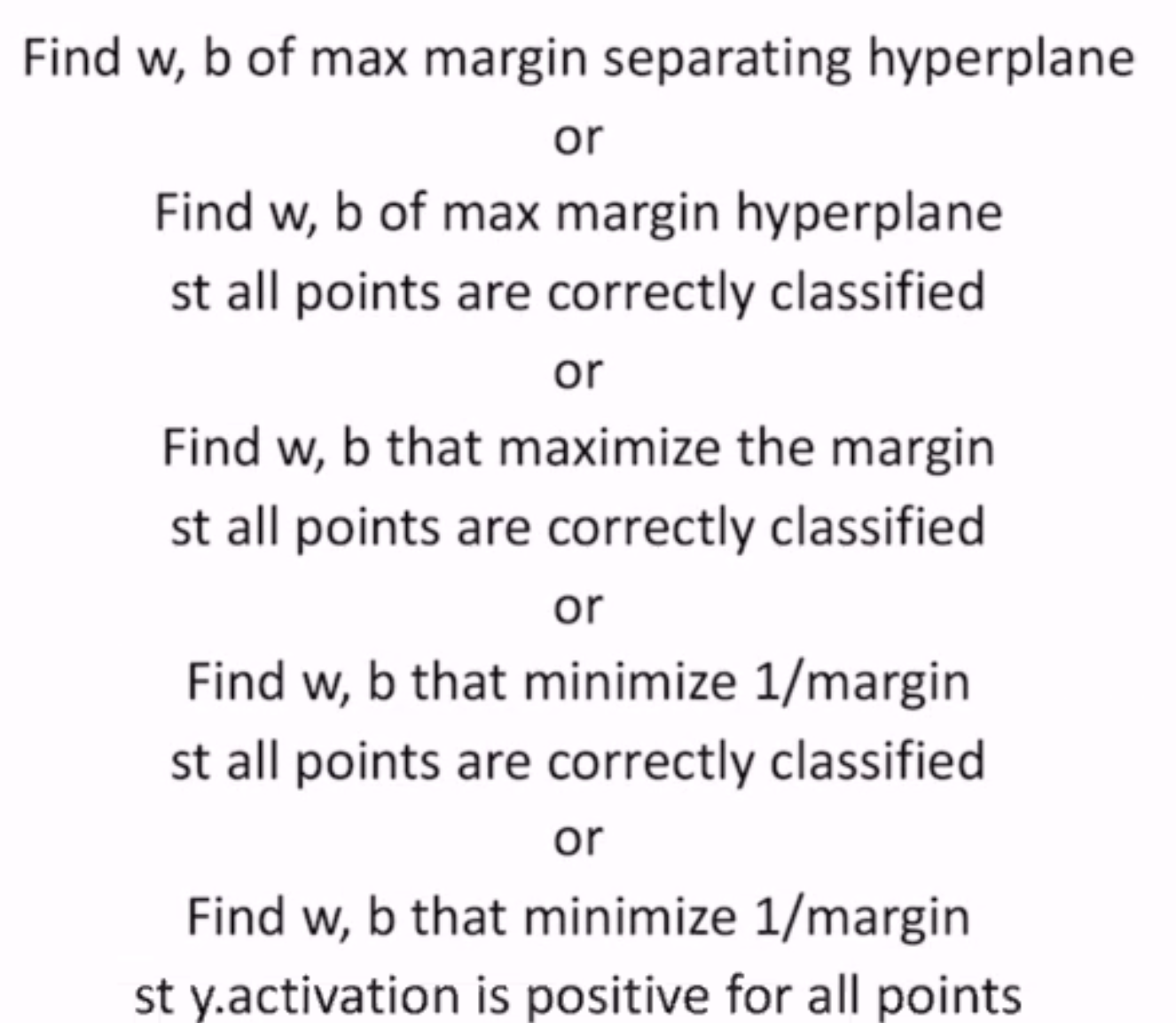
But \(y * activation\) is a weak condition - let’s increase it to be “sufficiently” positive
Final Goal: Find w, b that minimize 1/margin s.t. y * activation >= 1 for all points
Optimization¶
Where \(\gamma\) is the distance from the hyperplane to the nearest point
- maximizing \(\gamma\) = minimizing \(1/\gamma\)
- constraints: all training instances are correctly classified
- we have a 1 instead of 0 in the condition to ensure a non-trivial margin
- this is a hard constraint, and so called a hard-margin SVM
- what about for non linearly-separable data?
- infeasible solution (feasible set is empty): no hyperplane tielded
- let’s loosen the constraint slightly
Soft-Margin SVMs¶
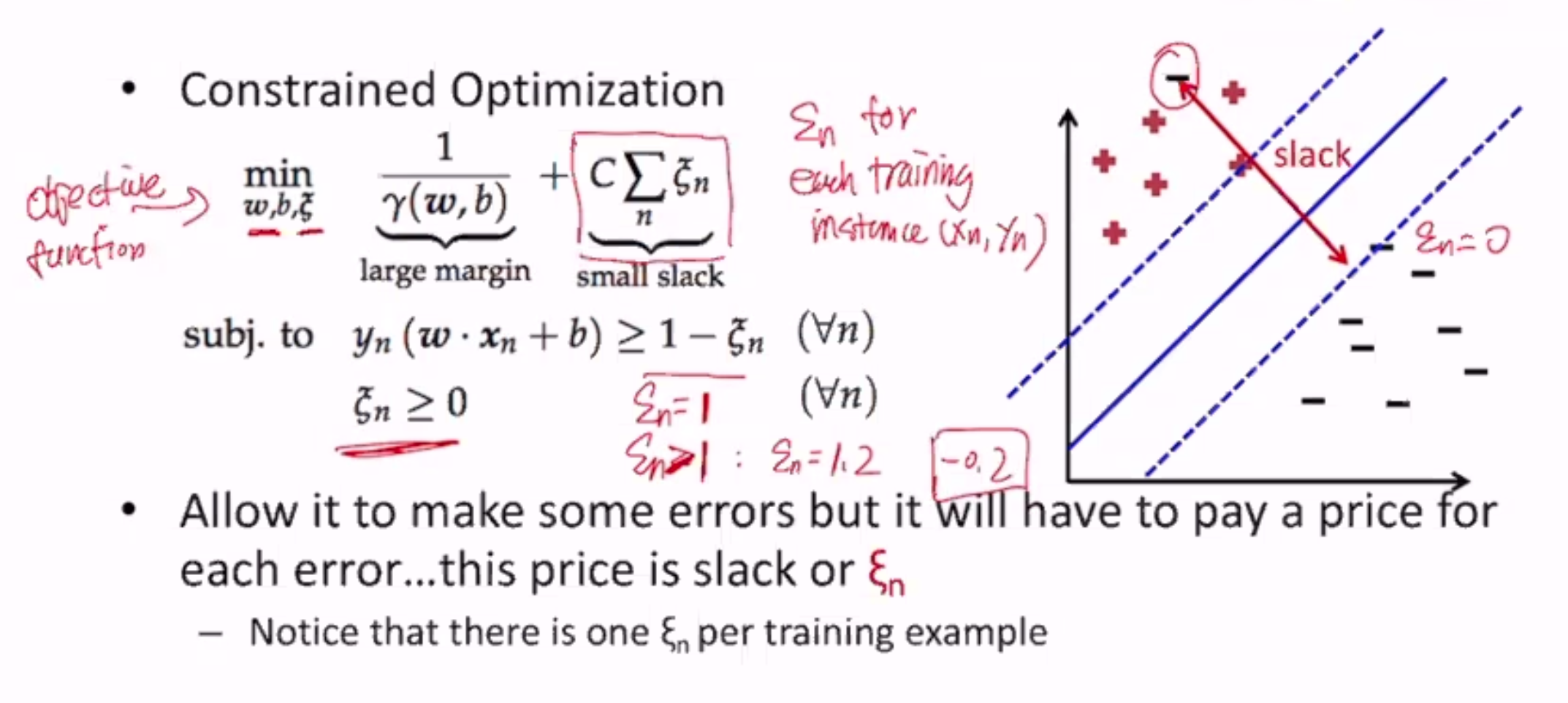
- introduce one slack variable \(\xi_n\) for each training instance
- if a training instance is classified correctly, \(\xi_n\) is 0 since it needs no slack
- but \(\xi_n\) can even be >1 for incorrectly classified instances
- if \(\xi_n\) is 0, classification is correct
- if \(0 < \xi_n < 1\), classification is correct but margin is not large enough
- if \(\xi_n > 1\), classification is incorrect
- where \(C\) is a hyperparameter (how much to care about slack)
- if the slack component of the objective function is 0, it’s the same goal as a hard-margin SVM
TLDR: maximize margin while minimizing total cost the model has to pay for misclassification that happens while obtaining this margin
Discussion¶
Note that the max-margin hyperplane lies in the middle between the positive and negative points
- So the margin is determined by only 2 data points, that lie on the lines \(w \cdot x + b = 1\) and \(w \cdot x + b = -1\)
- these points, \(x_+\) and \(x_-\), are called support vectors
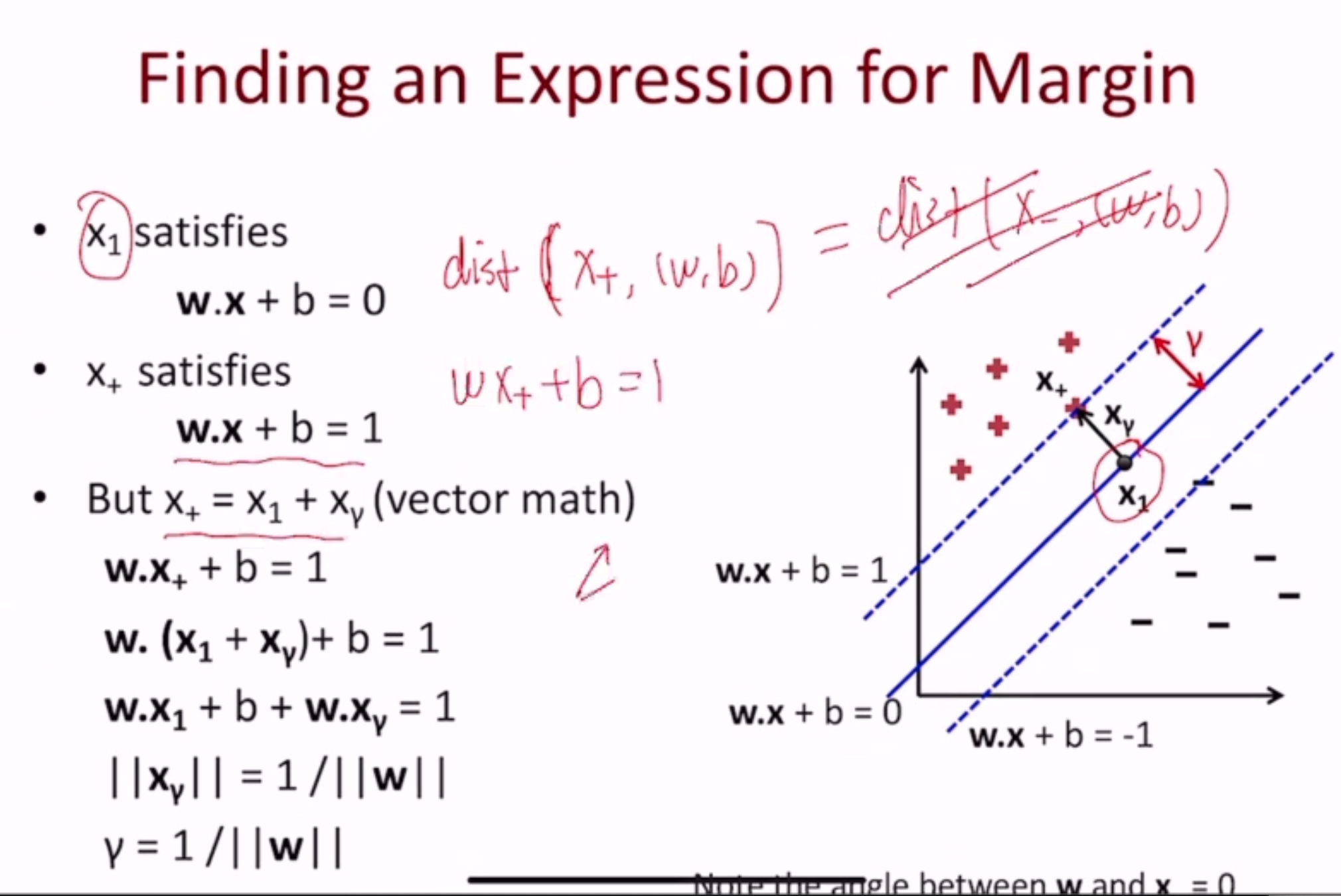
Note
\(w \cdot x_1 + b\) is 0 since \(x_1\) is on the decision boundary
\(w \cdot x_\gamma = 1\) -> \(||w||*||x_\gamma|| = 1\) since \(w, x_\gamma\) are parallel
Therefore, we can modify the objective:
Or, intuitively, finding the smallest weights possible.
Hinge Loss¶
We can write the slack variables in terms of \((w, b)\):
which is hinge loss! Now, the SVM objective becomes:
Solving¶
Hard-Margin SVM¶
- convex optimization problem
- specifically a quadratic programming problem
- minimizing a function that is quadratic in vars
- constraints are linear
- this is called the primal form, but most people solve the dual form
We can encode the primal form algebraically:
Dual Form¶
- does not change the solution
- introduces new variables \(\alpha_n\) for each training instance
Once the \(\alpha_n\) are computed, w and b can be computed as:
As it turns out, most \(\alpha_i\)’s are 0 - only the support vectors are not
For Soft-Margin SVM
For soft-margin SVMs, support vectors are:
- points on the margin boundaries (\(\xi = 0\))
- points in the margin region (\(0 < \xi < 1\))
- points on the wrong side of the hyperplane (\(\xi \geq 1\))
Conclusion: w and b only depend on the support vectors
Derivation¶
Given the algebriaecally encoded primal form:
We can switch the order of the min and max:
To solve inner min, differentiate L wrt w and b:
- \(w = \sum_i \alpha_i y_i x_i\) means w is a weighted sum of examples
- \(\sum_i \alpha_i y_i = 0\) means positive and negative examples have the same weight
- \(\alpha_i > 0\) only when \(x_i\) is a support vector, so w is a sum of signed support vectors
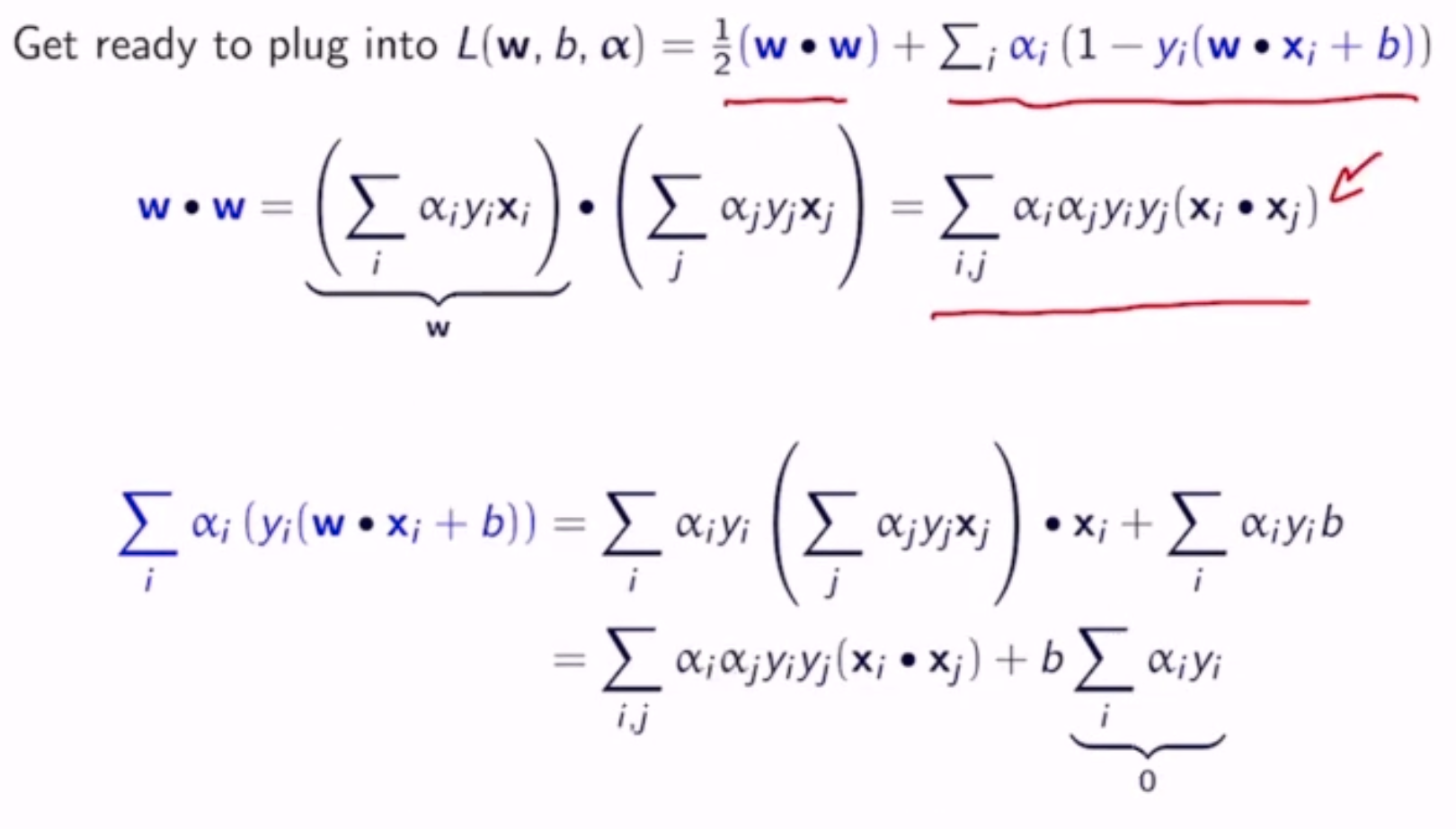
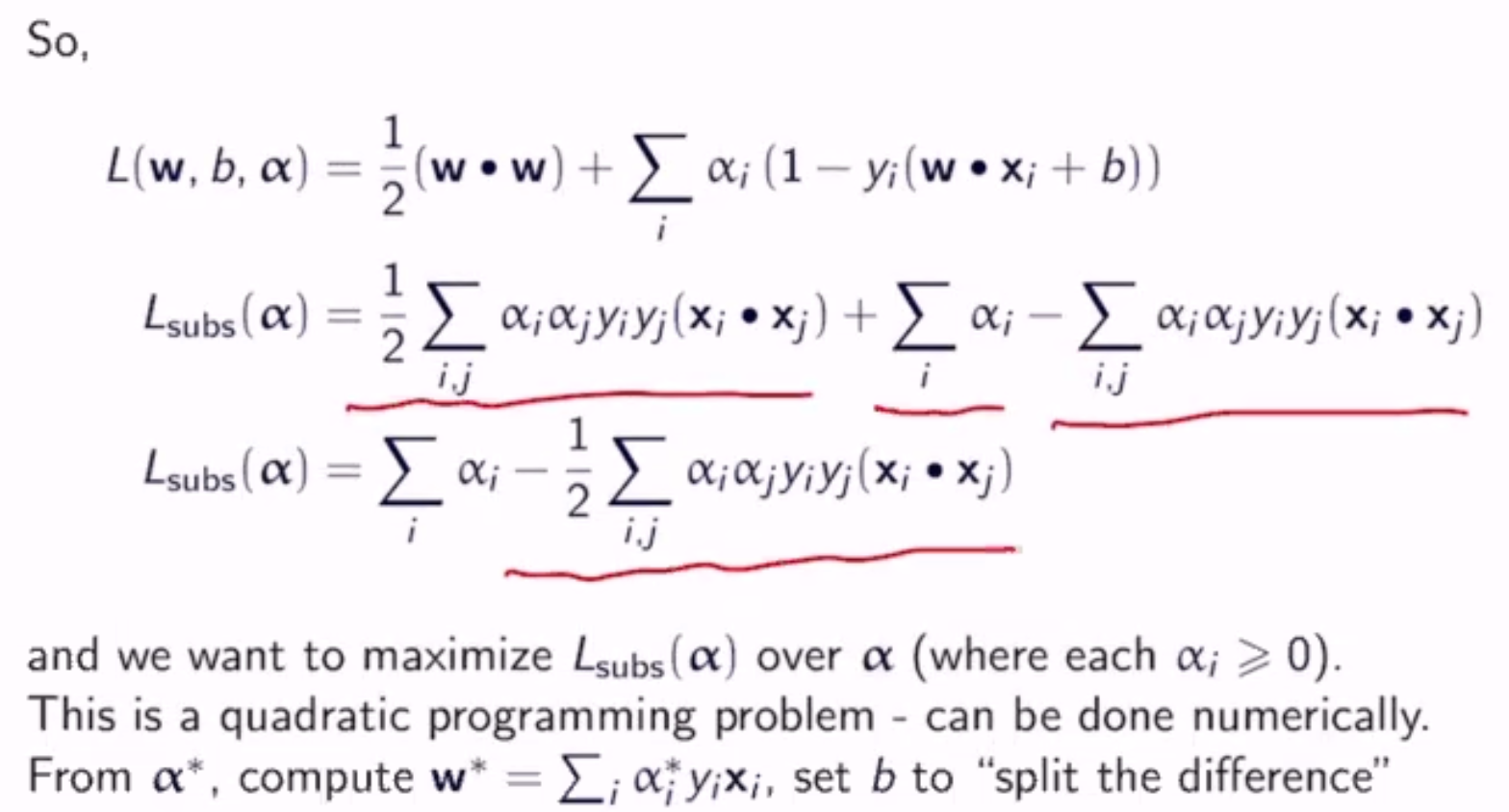
Conclusion
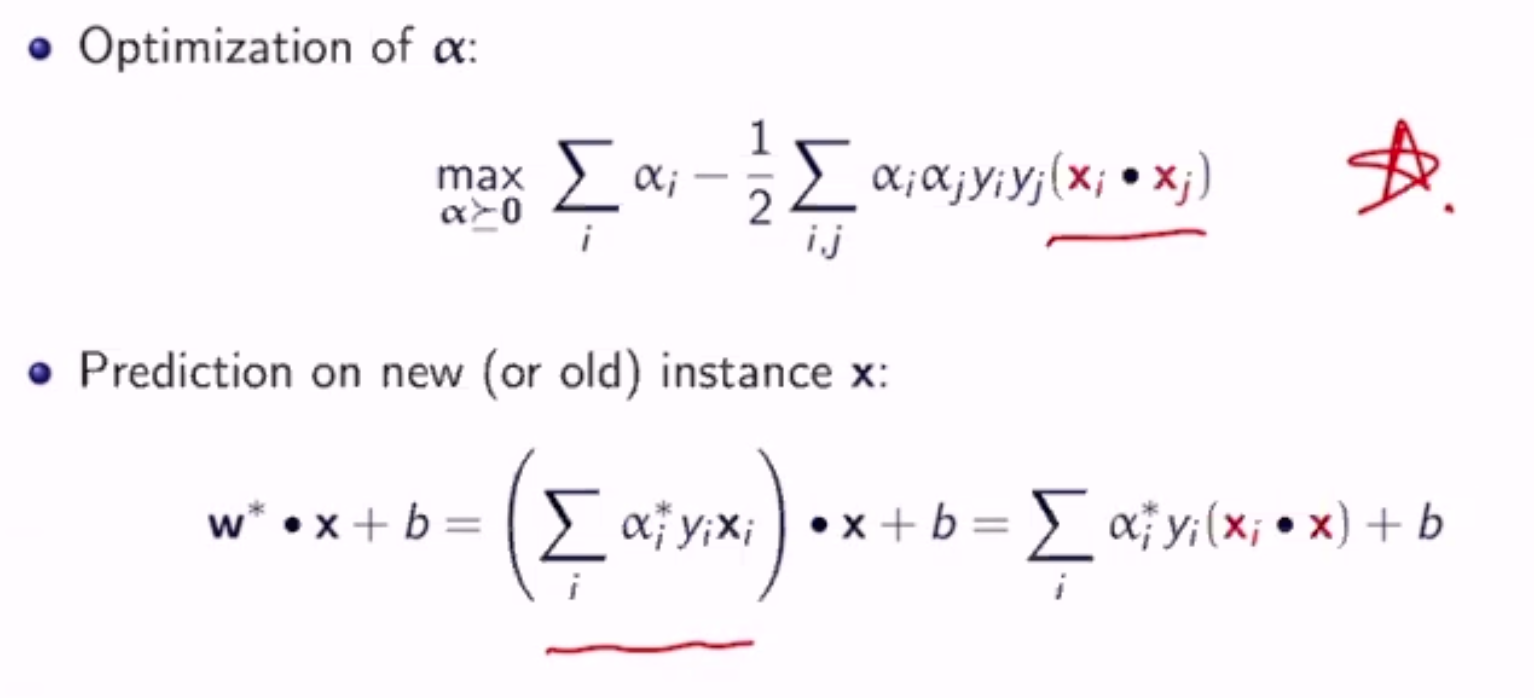
Soft-Margin
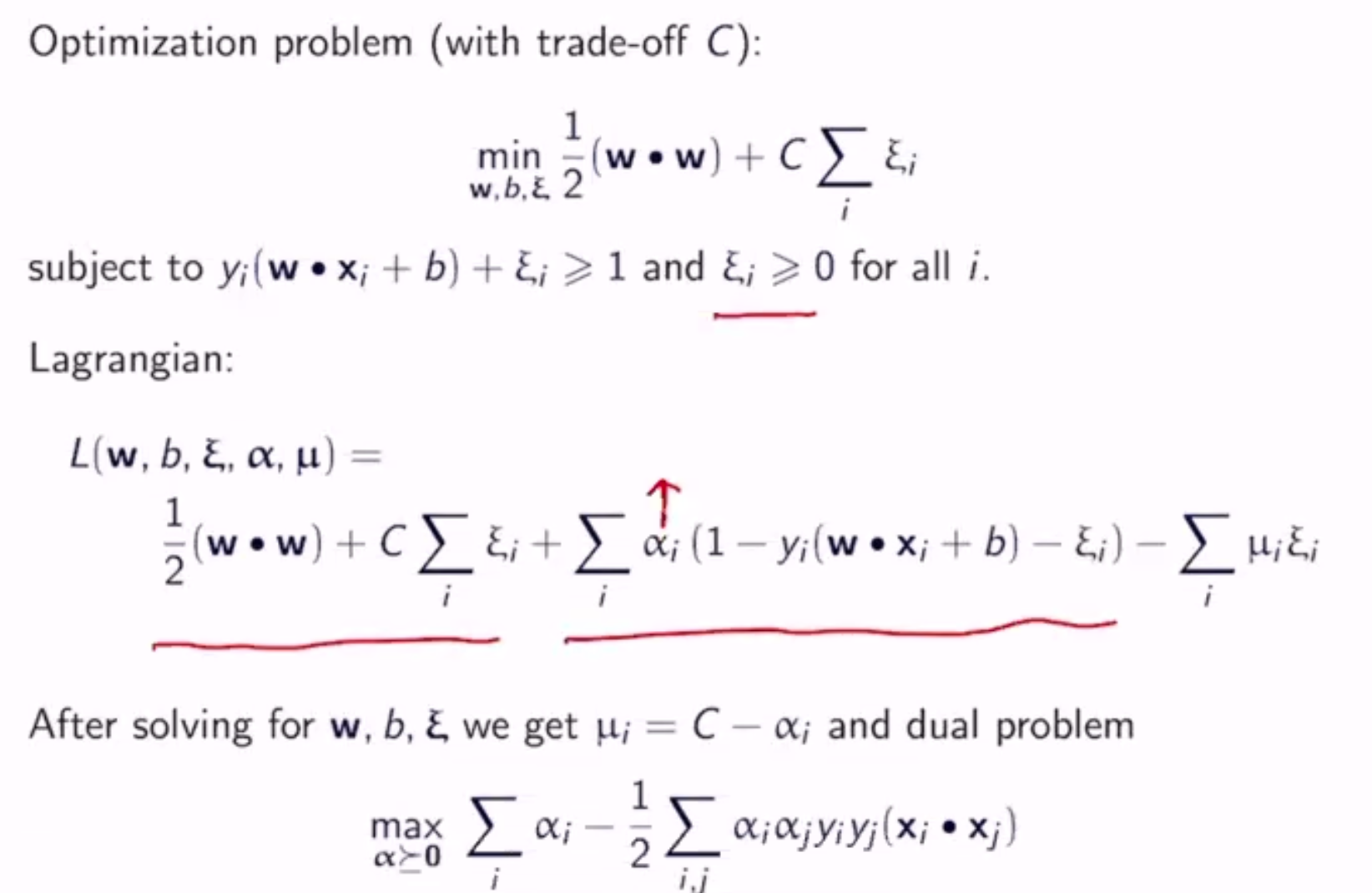
subject to \(0 \leq \alpha_i \leq c\) \((\forall i)\)
Non-Linearly-Seperable¶
What if our data is not linearly seperable?
- use a non-linear classifier
- transform our data so that it is, somehow
- e.g. adding a dummy dimension based on a quadratic formula of the real dimension
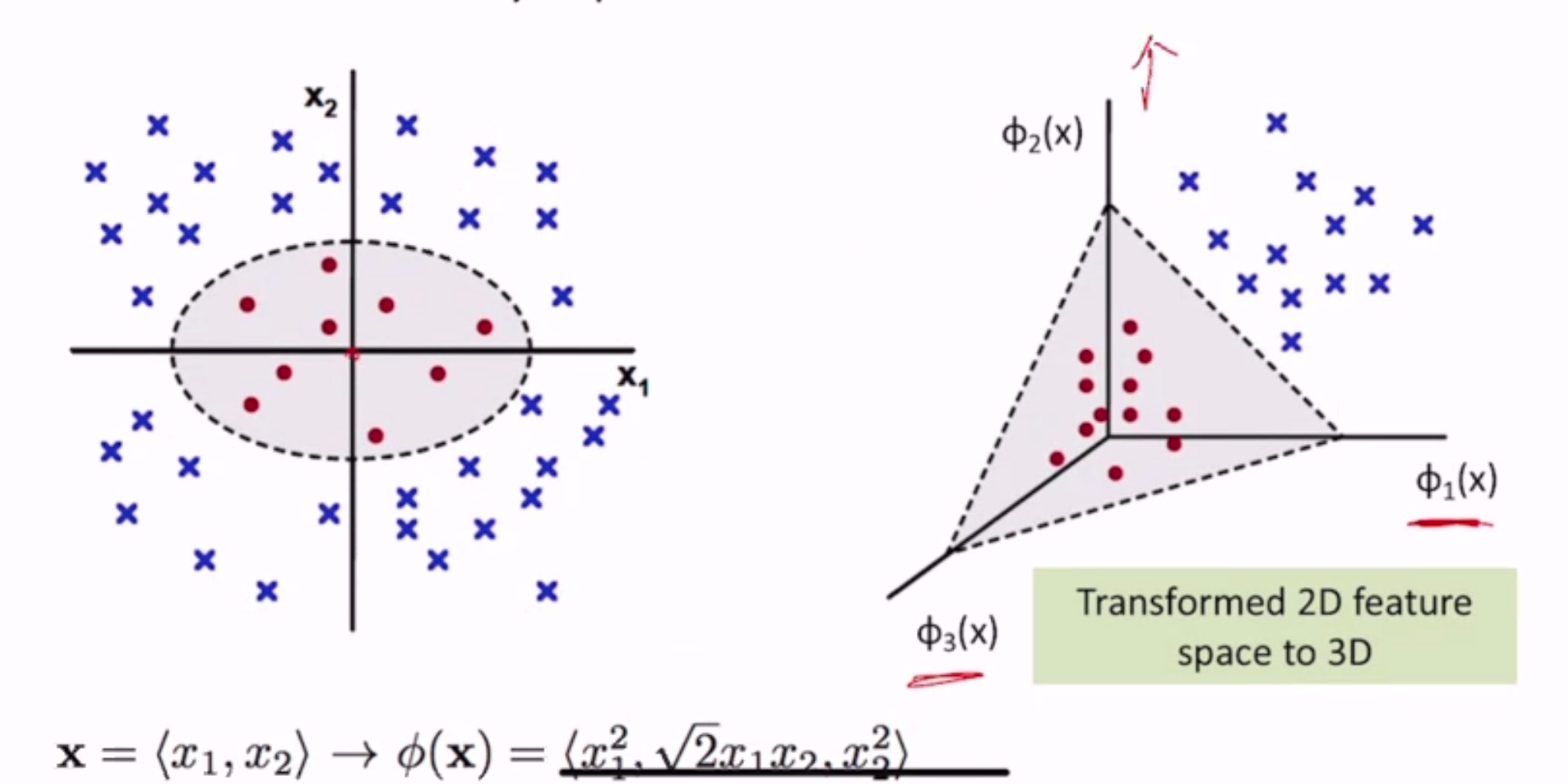
Feature Mapping¶
We can map the original feature vector to a higher dimensional space \(\phi(x)\)
e.g. quadratic feature mapping:
Pros: this improves separability, you can apply a linear model more confidently
Cons: There are a lot more features now, and a lot of repeated features - lots of computation and easier to overfit